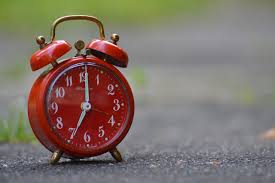It’s that time of year again. Goodness only knows where you’ve put that receipt, what you could or should be claiming for, how you’ll get through your tax return with your sanity intact. Sound familiar?
To ease you into that zone of inner calm, I have put together a 2 part guide (part 2 will be out in a few weeks) to help you collate the information required for completing your self-assessment tax return. Whether you’re using an accountant or doing your own tax return being organised about the paperwork will save both your sanity and a lot of time.
Let’s touch on the basics first
1 – Do you need to fill in a self-assessment return?
If HMRC thinks that you have income which needs to be taxed under self- assessment, they will have sent you a tax return to complete but ultimately it’s your responsibility to tell HMRC if you think you have income which needs to be taxed. If you’re not sure you check here.
 If you’re running a sole trade business you’ll need to complete a self-assessment tax return but don’t forget that even if your business makes a loss or your trading profit is under the personal allowance (2014-15 £10,000) you will still need to complete a return.
If you’re running a sole trade business you’ll need to complete a self-assessment tax return but don’t forget that even if your business makes a loss or your trading profit is under the personal allowance (2014-15 £10,000) you will still need to complete a return.
You could still be deemed to be running your own business and self-employed even if you think it’s just a hobby or something you do in your spare time such as selling regularly on eBay. You can read my post on whether you qualify here
2 – Do you need to panic? When is your tax return due to be submitted by?
If you haven’t already filed a return for the tax year 2014-15 then you will need to file online by the 31st January 2016.
 If you run a business as a sole trader but also have another job as an employee then you could opt to have any tax owed (if it’s less than £3,000) coded through PAYE.
If you run a business as a sole trader but also have another job as an employee then you could opt to have any tax owed (if it’s less than £3,000) coded through PAYE.
This will mean that instead of paying any tax you owe in one lump sum, any money you owe will be deducted from your salary each month over 12 months. You will however, need to submit your return by 31st December 2015.
3 – What is a tax year?
The tax year starts on the 6th April and ends on 5th April the following year. Odd dates I know but all the result of a little historical anachronism.
So the tax year just gone will be the one that you’re likely to be fretting over and that runs from 6th April 2014 to 5th April 2015.
4 – Who should complete your tax return?
If you’ve worked out that you need to submit a self-assessment tax return you have two options:
Either, forge ahead on your own steam if your tax affairs are very straightforward and you are up-to date with any changes in the relevant tax law.
Or, if your tax affairs are more complex, you want peace of mind and you’re keen to maximise tax relief, ask an accountant to support you. I can help you.
If you’re a sole trader in your first or second year of business the tax rules can be complex and you may be in a position to receive a tax refund. I always recommend that new starters obtain some support from an accountant – often the fee will pay for itself. You can find out more here.
If you’re in a sole trader partnership then each partner must fill in their own “partnership pages” but only one partner (the “nominated”partner) must complete the partnership tax return.
Getting organised
 The key to maintaining your sanity over this period is to get organised. Why?
The key to maintaining your sanity over this period is to get organised. Why?
Here are a few good reasons:
- It’s highly stressful dealing with your tax and collating all your records at the last minute – we’ve all been there
- If you’ve ever had to try and get through to HMRC on the phone in January, let alone the rest of the year you will know exactly what I’m talking about
- You’re increasingly likely to make errors if in addition to tax-return stress you’re trying to juggle Christmas, New Year, family commitments on top of trying to run your small business
- Planning on using an accountant? Be warned – they may not have the band-width to take on any more clients in January OR, if they do agree to take you on they may not be in a position to give you the quality time you deserve
Still not convinced? Imagine a world where the stress-inducing admin was done and dusted and you now had that luxury of immersing yourself in your zone of genius. Are you there now? Let’s make a start.
The first checklist
1 -Start by getting a ring binder file
Add in plastic file holders and dividers. You may want a create separate file for your sole trade business.
2 -Have a record to hand of your UTR (Unique Taxpayer Reference)
This is a 10 digit reference and can be found on self-assessment correspondence from HMRC. You won’t be able to submit your self assessment without it and you’ll need this for all future correspondence regarding your tax affairs with HMRC.
If you can’t find it then phone HMRC but they won’t give it to you over the phone so make sure they have your correct address.
3 – Keep a record of your HMRC online login
You will only need this if you are submitting your return yourself.
If you’ve lost your login or haven’t yet registered for one you can apply using your UTR, National insurance number and postcode. You can do that here.
You will then be sent an activation code with instructions for activating your account. Do this promptly as the code activation is time-barred. Once activated you will receive a HMRC user ID and password.
Be warned, this whole process can take several weeks. HMRC won’t send you the activation code by email – you’ll receive it by snail mail.
Over to you
If you’ve enjoyed this blog post I’d love it if you could please pass it on using the buttons below.
Keen to tackle the contents of “A Tax Return Checklist (part 2)”? You can sign up to my FREE monthly tips and inspiration for a guaranteed blog feed. Don’t forget you can unsubscribe at any time.
Completely in a pickle and need some tax and accounts support? Drop me a line.
